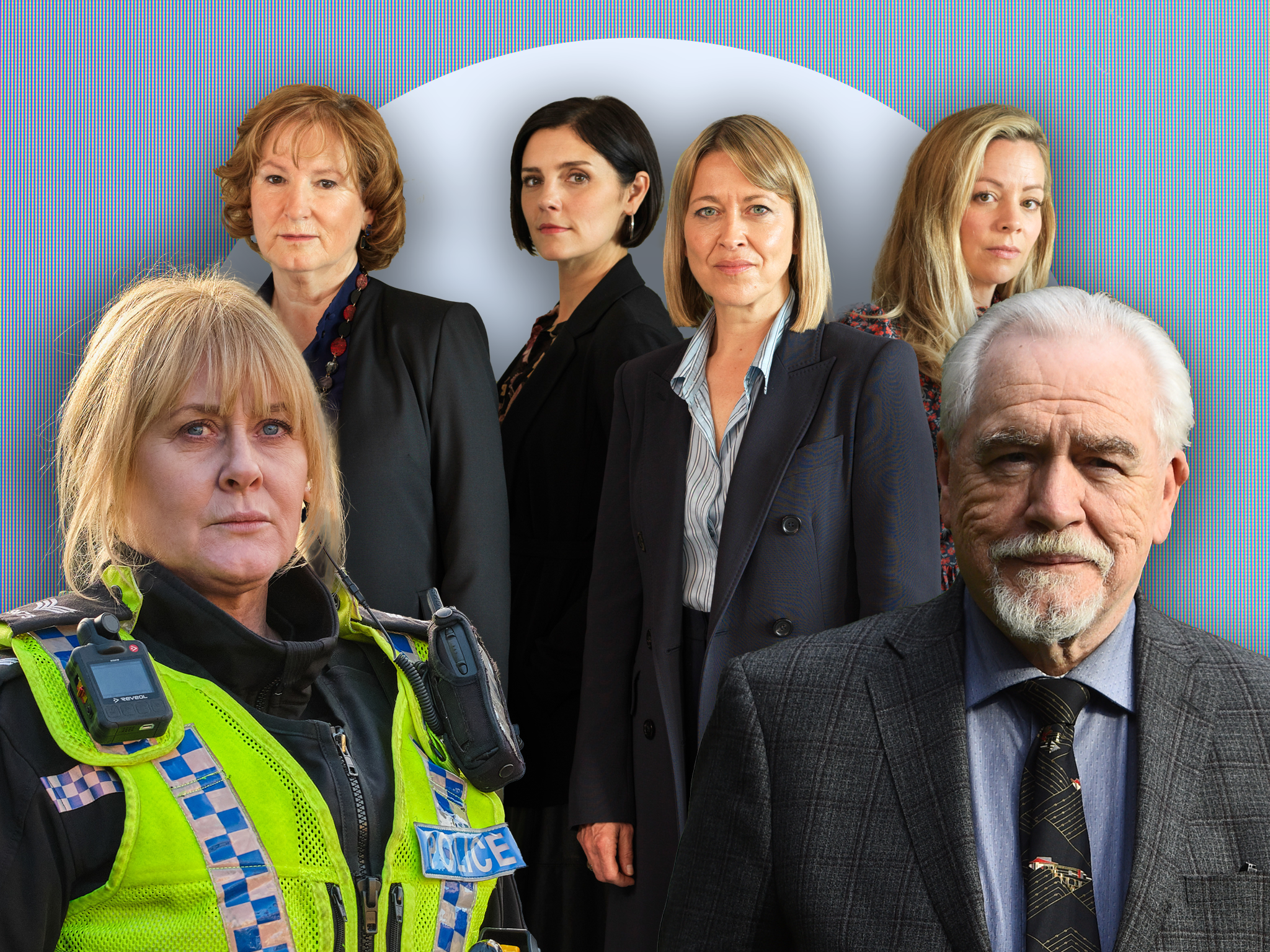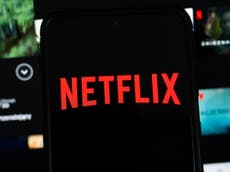Channel bore: Can anything stop the great British TV turn-off?
Young viewers have been switching off terrestrial TV for years. As a new report reveals that older telly addicts are joining them in the great streaming exodus, it’s time for broadcasters to get their backsides in gear, argues Michael Hogan, otherwise they won’t keep ours on the sofa for much longer

First they came for young viewers and I did not speak out, because sadly I wasn’t young anymore. Then they came for older viewers and suddenly I cared.
Yes, I’m seriously worried by this week’s news that mature Brits are turning off terrestrial telly. If the gogglebox can’t keep hold of golden oldies, we’re all doomed (which, fittingly, is a catchphrase from Dad’s Army).
The latest Ofcom report shows that traditional TV viewing has seen its sharpest ever fall in the past year. The media watchdog’s annual study of viewing habits found that the proportion of people tuning in each week was down from 83 per cent in 2021 to 79 per cent in 2022 – a record slump. And surprisingly, it’s mature viewers who are switching off at the fastest rate.
For the first time, Ofcom noted a "significant decline” in broadcast TV viewing among "core older audiences”. If you remember £1 notes and white Christmases, I’m afraid that means you.
Partly to blame, of course, is the streaming era. The proportion of over-65s using Disney+ rose from 7 per cent in early 2022 to 12 per cent in early 2023. Despite price rises and password crackdowns, Netflix (43 per cent) and Amazon Prime Video (37 per cent) remained stable. This follows Ofcom’s finding in 2020 that satisfaction levels with the BBC were falling among older, middle-class viewers. Many “silver streamers” aged over 55 duly took out streaming subscriptions for the first time during lockdown.
Catch-up services are also growing. ITVX now accounts for 10 per cent of ITV’s total viewing – up from 7 per cent last year. BBC iPlayer rose from 14 per cent to 18 per cent during the same period. With two-thirds of UK households now in possession of a smart TV, it’s easier to watch what you what, when you want – via your main set, as well as your laptop or tablet.
So why are older generations giving up on traditional telly? Should alarm bells be sounding in broadcasters’ boardrooms? I’d suggest there’s no need to panic – but they should take a long, hard look at their programming policies.
I’m in my early fifties, so don’t qualify as a golden oldie just yet. I’m more of a salt-and-pepper centrist dad. I also happen to be a TV critic, so watch more than is probably healthy. “You’ll get square eyes,” as my mum used to say when I was glued to Danger Mouse and Grange Hill after school.
Among my peers, though, terrestrial TV has certainly slipped down the agenda. It tends to be streaming and Sky shows that get talked-about down pubs, on dog walks and at dinner parties. My midlife friends eagerly dissect Succession, Bad Sisters, Poker Face, The Last of Us or Hijack, rather than anything on the main channels.
A straw poll of my parents, in-laws and their friends yields the same recurring complaints. Some describe TV as too “preachy”, “depressing” or “worthy”. Others mention crime being too violent, comedy being too rude or documentaries being dumbed down. A common frustration is moodily lit, mumbly dramas which make it hard to follow what the holy hell is going on. And crucially there’s that classic cry of “there’s nothing on”.
Terrestrial offerings for older audiences are getting thinner on the ground. ITV hits Endeavour and Doc Martin both bowed out recently, but are yet to be replaced by anything equally OAP-friendly. On the BBC, Holby City, Happy Valley and The Split have gone to the great scrapheap in the sky.
Whodunits remain perennially popular but new episodes of Vera, Strike and Midsomer Murders are few and far between. Sherlock and Line Of Duty are on hiatus, possibly permanently. When was the last decent Agatha Christie adaptation? Hercule Poirot and Miss Marple are conspicuous by their absence. Perhaps the butler did it.
Lavish period pieces and broad sitcoms are increasingly rare. Factual content is currently dominated by samey celebrity travelogues or “authored documentaries”, in which a C-lister bares their soul about some personal issue. Often poignant and admirable but no substitute for proper factual fare.
With smartphones keeping us doom-scrolling 24/7, news bulletins don’t have the pulling power they once had.
BBC1 continues to have the highest weekly reach of all TV channels at 58 per cent, but the corporation’s priorities are clear. It recently relaunched youth brand BBC3 as on-air channel, while dear old BBC4 got its budget slashed and has become a glorified repeats channel. A talent drain and the loss of rights to sport don’t help the sense that the Beeb is withering on the vine.
Understandably, previously loyal older viewers are turning away from the top of the TV guide to explore channels lower down. Sky Documentaries is increasingly impressive. The UK TV stable – Gold, Alibi and Yesterday – plies a smart trade in classic comedy, crime and social history. Sky Arts is eclipsing BBC4. Archive-plundering Talking Pictures is a nostalgic treat.
Channel 5 is a rare terrestrial success story. Its roster of rural docusoaps, trains, true crime, retro list shows and royal gossip might not be fashionable but it’s cannily commissioned to be completely accessible. The BBC and ITV could learn lessons about populist programming from the much-maligned home of cruise diva Jane McDonald.
No wonder streaming platforms look increasingly tempting. It’s not just the ubiquitous Netflix that’s luring oldies. If you’ve heard people raving about The Bear or Only Murders in The Building, why not try Disney+? If you’ve seen five-star reviews of Severance or Slow Horses, consider stumping up for Apple TV+. Missing out on Hacks or The Marvelous Mrs Maisel? Maybe it’s finally time to upgrade to Amazon Prime (free, faster postage on parcels is merely a bonus). Don’t even get me started on films and sport being snapped up by Sky, BT and Amazon.
As the cost of living crisis bites, a £159 TV licence might not sound cheap – but it buys an astonishingly wide range of radio, news and online services, as well as TV. Streamers, which range from £60 to £95 apiece, might sound cheaper but soon add up. Anecdotally, I know that some circumvent the expense by strategically taking up free trials or juggling subscriptions so they can binge on must-see shows, then bail out.
There are bright spots for our legacy channels. They might be seeing a steep downturn in ratings for scheduled programming – the number of shows pulling in 4 million-plus viewers has halved in the past decade – yet they remain unrivalled at bringing the nation together for big cultural or sporting events. Ofcom acknowledges that public service broadcasters still dominate the most-watched lists due to their coverage of "valued national moments”.
The men’s World Cup or women’s Euros, the Queen’s platinum jubilee or state funeral, Strictly Come Dancing or Britain’s Got Talent on Saturday nights, Big Ben’s bongs on New Year’s Eve, I’m A Celebrity’s torturing of Matt Hancock, tentpole thrillers like Trigger Point or The Tourist (2022’s biggest dramas with 11 million viewers each) – these are communal experiences that streaming services simply can’t create.
TV listings magazines still sell 2.5 million copies per week, so the appetite is clearly there. Big channels just need to feed it better. The top two regular weekly shows are Antiques Roadshow and Countryfile – textbook Middle England, sure, but well-made mainstream fare. To woo back alienated over-55s, primetime needs more of these, more prestige programming, and fewer hip Gen Z dramas, shouty cookery contests and reality trash.
Ye olde habit of sitting down and seeing what’s on telly is on the wane because we live in a different media landscape. TikTok, YouTube and Twitter memes hog our eyeballs. We’ve become accustomed to curating our own leisure time. We still consume “content” (that dreaded word), we’re just doing it in different ways. EastEnders, for example, has plummeting TV ratings but is the top show on iPlayer. Channels are wisely digitalising their services to meet changing needs.
Ofcom says our media diet is more "diverse and fragmented than ever”. Its director of research, Yih-Choung Teh, says audiences now have "an all-you-can-eat buffet of broadcasting and online content to choose from", so "there’s more competition for our attention than ever”. Our lives being less ordered post-pandemic is another factor. Yet we mustn’t forget that TV remains a lifeline for the millions who don’t have high-speed internet and can’t afford endless streaming subs. Terrestrial TV needs to be protected and better serve the silent majority.
Streamers have far deeper pockets when it comes to epic productions. Our plucky homegrown channels can’t compete on scale, so must concentrate on quality instead. We’ve heard for years how young viewers are drifting away from old-fashioned linear TV. Now that older viewers are joining them, it’s time for broadcasters to get their backsides in gear. Otherwise, they won’t keep ours on the sofa.






Join our commenting forum
Join thought-provoking conversations, follow other Independent readers and see their replies
Comments